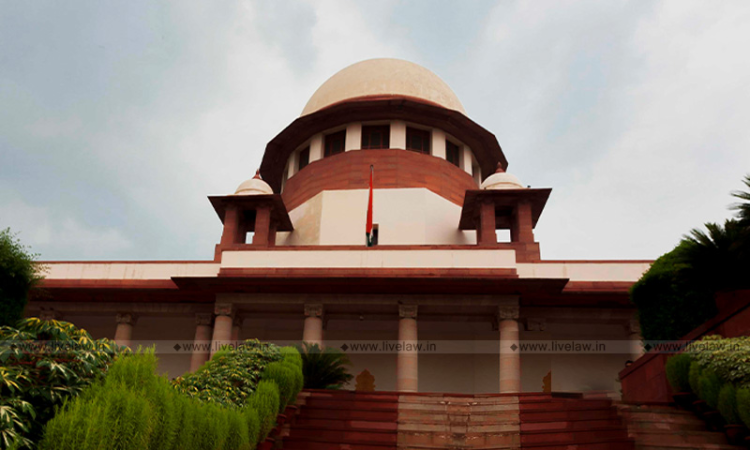- Home
- /
- News Updates
- /
- Witnesses' Evidence Cannot Be...
Witnesses' Evidence Cannot Be Discarded As A Whole Merely Because There Are Exaggerations, Reiterates Supreme Court
LIVELAW NEWS NETWORK
8 May 2021 2:03 PM
The Supreme Court observed that evidence given by a witness can not be discarded as a whole on the ground that it is exaggerated."To make a mountain out of a molehill, the molehill shall have to exist primarily. A Court of law, being mindful of such distinction is duty bound to disseminate 'truth' from 'falsehood' and sift the grain from the chaff in case of exaggerations", the bench...
The Supreme Court observed that evidence given by a witness can not be discarded as a whole on the ground that it is exaggerated.
"To make a mountain out of a molehill, the molehill shall have to exist primarily. A Court of law, being mindful of such distinction is duty bound to disseminate 'truth' from 'falsehood' and sift the grain from the chaff in case of exaggerations", the bench comprising CJI NV Ramana, Justices Surya Kant and Aniruddha Bose observed.
In this case, the appellant-convicts contended that the statements made by the prosecution witnesses contained exaggerations and therefore it was wrong to convict him on the basis of such statements. According to the FIR, the deceased died owing to a single axe blow inflicted by the accused and the postmortem report also showed only one head injury on her person. However, three prosecution eyewitnesses, deposed that the first accused gave two axe blows on her head and then co accused also hit the deceased's left ear with an axe twice.
In appeal, the Court agreed with the State's contention that even in cases where a major portion of the evidence is found deficient, if the residue is sufficient to prove the guilt of the accused, conviction can be based on it. The bench observed:
24. It is vehemently contended that the evidence of the prosecution witnesses is exaggerated and thus false. Cambridge Dictionary defines "exaggeration" as "the fact of making something larger, more important, better or worse than it really is". Merriam Webster defines the term "exaggerate" as to "enlarge beyond bounds or the truth". The Concise Oxford Dictionary defines it as "enlarged or altered beyond normal proportions". These expressions unambiguously suggest that the genesis of an 'exaggerated statement' lies in a true fact, to which fictitious additions are made so as to make it more penetrative. Every exaggeration, therefore, has the ingredients of 'truth'. No exaggerated statement is possible without an element of truth. On the other hand, Page | 18 Advance Law Lexicon defines "false" as "erroneous, untrue; opposite of correct, or true". Oxford Concise Dictionary states that "false" is "wrong; not correct or true". Similar is the explanation in other dictionaries as well. There is, thus, a marked differentia between an 'exaggerated version' and a 'false version'. An exaggerated statement contains both truth and falsity, whereas a false statement has no grain of truth in it (being the 'opposite' of 'true'). It is well said that to make a mountain out of a molehill, the molehill shall have to exist primarily. A Court of law, being mindful of such distinction is duty bound to disseminate 'truth' from 'falsehood' and sift the grain from the chaff in case of exaggerations. It is only in a case where the grain and the chaff are so inextricably intertwined that in their separation no real evidence survives, that the whole evidence can be discarded
Taking note of the statements made by the prosecution witnesses, the bench observed that even if the exaggeration of multiple axe blows being given to the deceased were discarded, the allegation that the accused entered house of the victims armed with an axe and hit the deceased on her head, and that she died due to a head injury was consistent and undisputed throughout the FIR and the deposition by prosecution witnesses.
Referring to Hari Chand v. State of Delhi (1996) 9 SCC 112, the court said that while appreciating the evidence of witnesses in a criminal trial especially in a case of eyewitnesses the maxim falsus in uno, falsus in omnibus cannot apply and the court has to make efforts to sift the grain from the chaff.
The court also addressed the contention of the accused (against reversal of acquittal by the High court) that if two views are possible, the High Court ought not to interfere with the trial Court's judgment.
"15.. However, such a precautionary principle cannot be overstretched to portray that the "contours of appeal" against acquittal under Section 378 CrPC are limited to seeing whether or not the trial Court's view was impossible. It is equally well settled that there is no bar on the High Court's power to reappreciate evidence in an appeal against acquittal... the CrPC does not differentiate in the power, scope, jurisdiction or limitation between appeals against judgments of conviction or acquittal and that the appellate Court is free to consider on both fact and law, despite the self-restraint that has been ingrained into practice while dealing with orders of acquittal where there is a double presumption of innocence of the accused.", the bench observed while upholding the conviction.
Case: Achhar Singh vs. State of Himachal Pradesh [CRA 1140 1141 OF 2010]
Coram: CJI NV Ramana, Justices Surya Kant and Aniruddha Bose
Citation: LL 2021 SC 249
Click here to Read/Download Judgment

